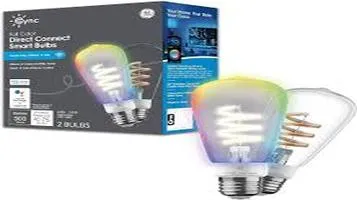LED Light Bulbs: A Comprehensive Review
LED light bulbs, or Light Emitting Diode bulbs, represent a modern, energy-efficient lighting solution compared to traditional incandescent and fluorescent bulbs. These bulbs convert electrical energy directly into light using semiconductor technology, resulting in less energy wasted as heat. This efficiency not only reduces electricity bills but also extends the bulb's lifespan, often lasting up to 25,000 hours or more. LED bulbs are available in various color temperatures, from warm yellows to cool blues, catering to diverse lighting needs and preferences. Additionally, they are environmentally friendly as they do not contain hazardous materials like mercury. With their durability, low energy consumption, and decreasing costs, LED light bulbs are increasingly favored in both residential and commercial settings for sustainable and versatile lighting solutions.

In the ever-evolving landscape of home and commercial lighting, LED light bulbs have emerged as a revolutionary technology. Their rapid adoption over the past decade can be attributed to a myriad of benefits that appeal to both eco-conscious consumers and those seeking economic savings. This review aims to provide an in-depth analysis of LED light bulbs, focusing on their design, functionality, energy efficiency, environmental impact, and overall performance.
Design and Functionality
LED, or Light Emitting Diode, technology has transformed traditional lighting paradigms. Unlike incandescent bulbs that rely on heating a filament to produce light, LEDs work by passing an electrical current through a semiconductor material, which then emits light. This fundamental difference in operation results in several notable advantages.
Firstly, LED bulbs are incredibly versatile in design. They come in a variety of shapes, sizes, and color temperatures, making them suitable for diverse applications—from household lighting to industrial uses. Whether you need a warm, cozy ambiance for your living room or bright, daylight-like illumination for a workspace, there's an LED bulb designed to meet your specific needs.
In terms of functionality, LEDs are instant-on, meaning they reach their full brightness immediately upon being switched on. This is a significant improvement over compact fluorescent lamps (CFLs), which often require a warm-up period. Additionally, many LED bulbs are dimmable, providing further flexibility in creating the desired lighting atmosphere.
Energy Efficiency
One of the most compelling reasons to switch to LED lighting is its superior energy efficiency. LEDs consume up to 80% less energy than traditional incandescent bulbs and around 20-25% less than CFLs. This significant reduction in energy consumption translates directly into lower electricity bills. For example, replacing a 60-watt incandescent bulb with a comparable 10-watt LED can save approximately 50 watts of power per hour of use.
Moreover, LEDs have a much longer lifespan. While an incandescent bulb typically lasts around 1,000 hours and a CFL about 8,000 hours, an LED bulb can last up to 25,000 hours or more. This longevity reduces the frequency of replacements, further enhancing their cost-effectiveness.
Environmental Impact
LEDs are not just beneficial for consumers; they are also advantageous for the environment. Reduced energy consumption means lower greenhouse gas emissions, as less electricity generation is required. This is particularly important in regions where electricity is primarily produced from fossil fuels.
Furthermore, LEDs do not contain hazardous substances like mercury, which is present in CFLs. This makes disposal less problematic and reduces the risk of environmental contamination. Many LED bulbs are also designed to be recyclable, aligning with broader sustainability goals.
Performance
When it comes to performance, LED bulbs consistently outperform their traditional counterparts. They offer superior light quality, with high Color Rendering Index (CRI) ratings that ensure colors appear more natural and vibrant. This makes them ideal for settings where accurate color representation is crucial, such as in art studios or retail environments.
LEDs also generate less heat compared to incandescent and halogen bulbs. This characteristic not only makes them safer to handle but also reduces the load on air conditioning systems, contributing to additional energy savings in warmer climates.
Another noteworthy aspect is the directionality of LED light. Unlike incandescent bulbs that emit light in all directions, LEDs can be designed to focus light in a specific direction. This makes them highly efficient for task lighting and reduces the need for reflectors and diffusers, further improving their efficiency.
Potential Drawbacks
Despite their numerous advantages, LED light bulbs are not without their drawbacks. One of the primary concerns has been the initial cost. Although prices have dropped significantly over the years, LED bulbs are still more expensive upfront compared to incandescent and CFL bulbs. However, the long-term savings in energy costs and reduced replacement frequency often offset this initial investment.
Another issue that some users have reported is the potential for flickering, especially in lower-quality models. Flickering can be caused by fluctuations in power supply or incompatible dimmer switches. To mitigate this, it is advisable to purchase LED bulbs from reputable manufacturers and check for compatibility with existing fixtures and dimmers.
Conclusion
In summary, LED light bulbs represent a significant advancement in lighting technology. Their superior energy efficiency, long lifespan, and minimal environmental impact make them an excellent choice for both residential and commercial applications. While the initial cost may be higher, the long-term benefits in terms of energy savings and reduced maintenance costs make LEDs a wise investment.
As technology continues to evolve, we can expect further improvements in LED performance and reductions in cost, solidifying their position as the go-to lighting solution for the future. Whether you're looking to reduce your carbon footprint, save on energy bills, or simply enjoy better quality light, LED bulbs are a compelling option well worth considering.






